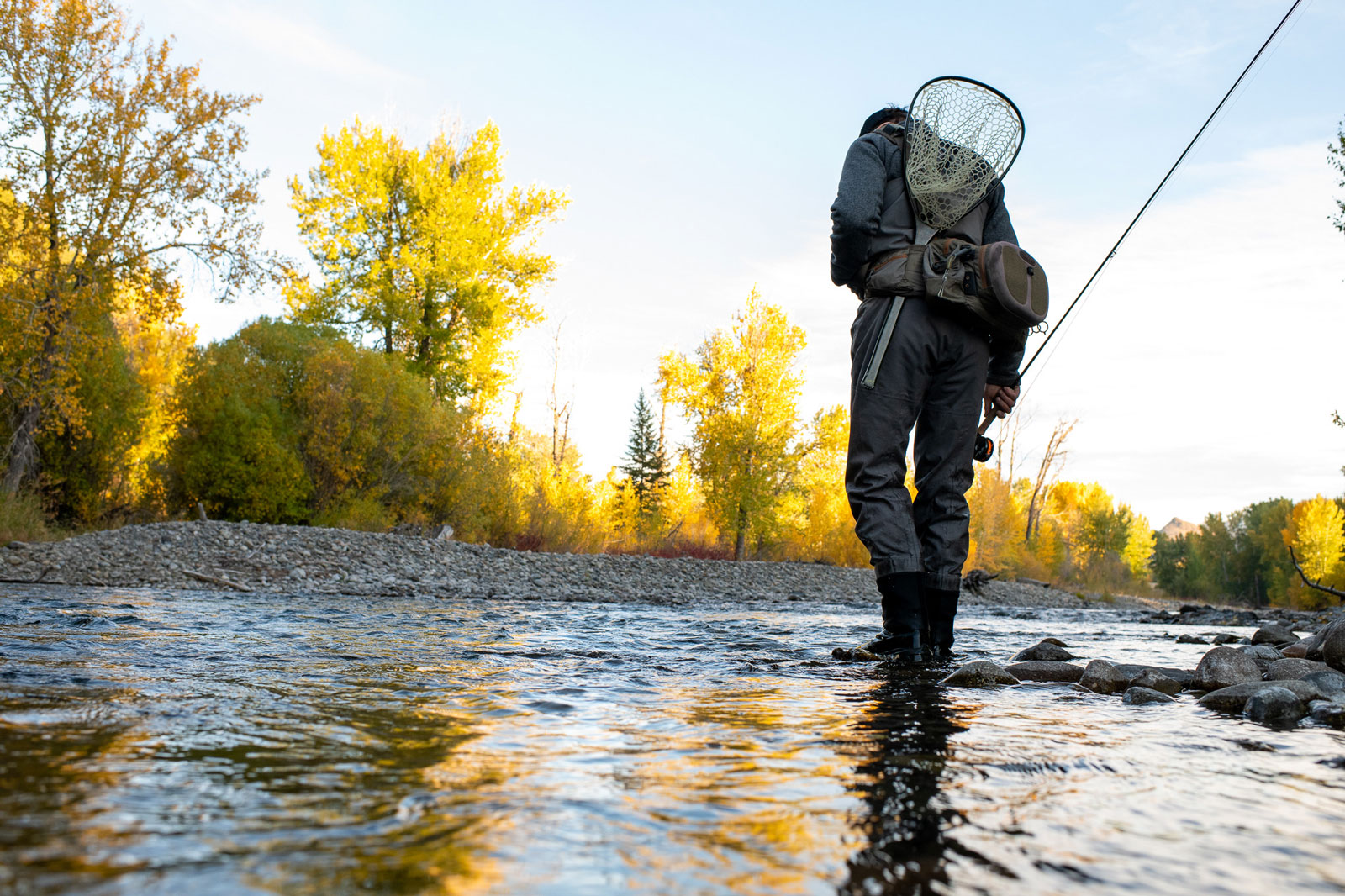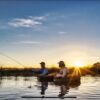“If you want to increase your success rate, double your failure rate.”
― Thomas Watson, Sr. Founder of IBM
If you want to double your failure rate, get yourself to the river. What separates the exceptional from the average is one’s ability to find opportunity for either success or failure, and then learn from it.
The Big Wood
October is spectacular on the Wood! Hecubas are still making an appearance north of town, but their numbers are dwindling. This bug can be a great one to use if you are searching the water looking to bring a fish to the surface. Ants are a good option as well when searching likely water. Baetis are going to continue to be the best option and should continue to hatch throughout the warmest part of the day. Also, nymphing continues to be outstanding. The best method is to fish a high floating dry, like a parachute ant, hopper, caddis, or Hecuba, with a small Baetis nymph or Zebra midge (size 18) trailing behind. The fish are incredibly fast this time of year and you should expect a strike the moment your flies touch the water. Many anglers miss these “induced takes” because they are too busy mending their lines. Be stealthy, shorten your cast and your drift, and pay less attention to line maintenance…simply get ready to “set the hook.” These fish only give you one chance. Remember, with the cool mornings, the fishing has really been best from around noon till the sun leaves the water.
Silver Creek
This time of year, the choice of bugs dwindles to just a few options. Be prepared for lots of Baetis as well as Mahogany Duns. You may find pockets of Tricos, maybe even a few Callibaetis depending on where you are, but once the cooler temps take hold these bugs will disappear until next year. Terrestrials are still going to be a factor, especially on the windy days. You will find the big browns staging to spawn in shallow water with gravel bottoms. If they are obviously in spawn mode (on redds), they can be fascinating to watch, but please don’t fish for them and always watch your step around redds. As with all our rivers this time of year, the best fishing will be from the middle of the day into the afternoon. Remember, when fishing the Preserve, the visitor center remains closed. Look for posted information at each access allowing you to sign in via your phone with a QR code or by texting “Visitor” to (833) 593-0682.
The Big Lost Upper
This is a glorious place to spend a crisp fall day fishing. The Lost River Range towers over the tops of the golden-hued cottonwoods against a blue sky providing a dramatic backdrop for fly fishermen. Flows are now at 250 CFS, up from last week, but they should drop over the next few weeks. The fishing is good throughout the day once the air warms up enough to get the bugs going. Look for heads in the seams and in the slow tail outs sipping the Fall Baetis Duns and Spinners. And scan the dancing water for fish feeding on emergers. When the bugs are sporadic, be prepared to nymph.
The Big Lost Lower
The fishing remains very good for small wild fish with the occasional stunner. The water in this part of the Lost is low and cold, so focus your attention on the main stem of the Upper Lost from the North Fork confluence and down and plan on fishing from about noon on till the sun leaves the water. Since the river is low, the fish are concentrated. Take along an assortment of your favorite attractor dry flies and nymphs as well as standard parachute patterns.
The Salmon
It is very chilly in the morning up in Stanley, but the afternoon fishing is very good. There are plenty of good access points along the river above and below the town of Stanley. For flies, Yellow and Orange Stimulators, hoppers, and other attractors work great. Standard beaded nymphs tied of the back of these big bugs will also be good producers.
Southfork of the Boise
With flows at around 300 CFS, wade fishing is a breeze. As always, look for Pinks and Flavs along with fall Baetis during the comfortable times of the day. Also expect to see crane flies and some caddis skittering about. If you find no bugs, you might try a hopper. Nymphing with small midge and mayfly nymphs is also going to be productive.
Local Ponds
Gaver’s Lagoon, Penny, and Lake Creek ponds have been stocked for the last time and make a great location for a family picnic.
Big Wood & Warm Springs: Red Quills | Crane Flies | Caddis | Baetis | Chubby Chernobyl | Iron Lotus | SRS Bullet French Nymph | Duracell Jig 12-18 | Perdigon 14-18 | Pat’s Rubber Legs | Bishop’s Dynamite | DB Zebra Midge in black, red, or olive | King Prince
Silver Creek: Baetis | Mahogany Duns | October Caddis | Hoppers | Ants | Callibaetis | Griffiths Gnats | Parachute Midge | Iron Lotus | SRS Bullet French Nymph | Jake’s Perdigon 14-18 | DB Zebra Midge in black, red, or olive
Big Lost: Baetis | Crane Flies | Chubby Chernobyl | Iron Lotus | SRS Bullet French Nymph | Duracell Jig 12-18 | Perdigon 14-18 | Pat’s Rubber Legs | Bishop’s Dynamite | DB Zebra Midge in black, red, or olive | King Prince
Salmon: Chubby Chernobyl | Duracell Jig 12-18 | Perdigons 14-18 | Pat’s Rubber Legs | Hares Ear Nymph | Pheasant Tails | Bishop’s Dynamite | King Prince | Buggers
South Fork of the Boise: Caddis | Pinks | Baetis | Chubby Chernobyl | Iron Lotus | SRS Bullet French Nymph | Duracell Jig 12-18 | Perdigon 14-18 | Pat’s Rubber Legs | Bishop’s Dynamite | DB Zebra Midge in black, red, or olive | King Prince
| Silver Creek Big Wood The Big Lost South Fork of the Boise Salmon River |
50.8 cfs 109 cfs 247 cfs 286 cfs 973 cfs |




